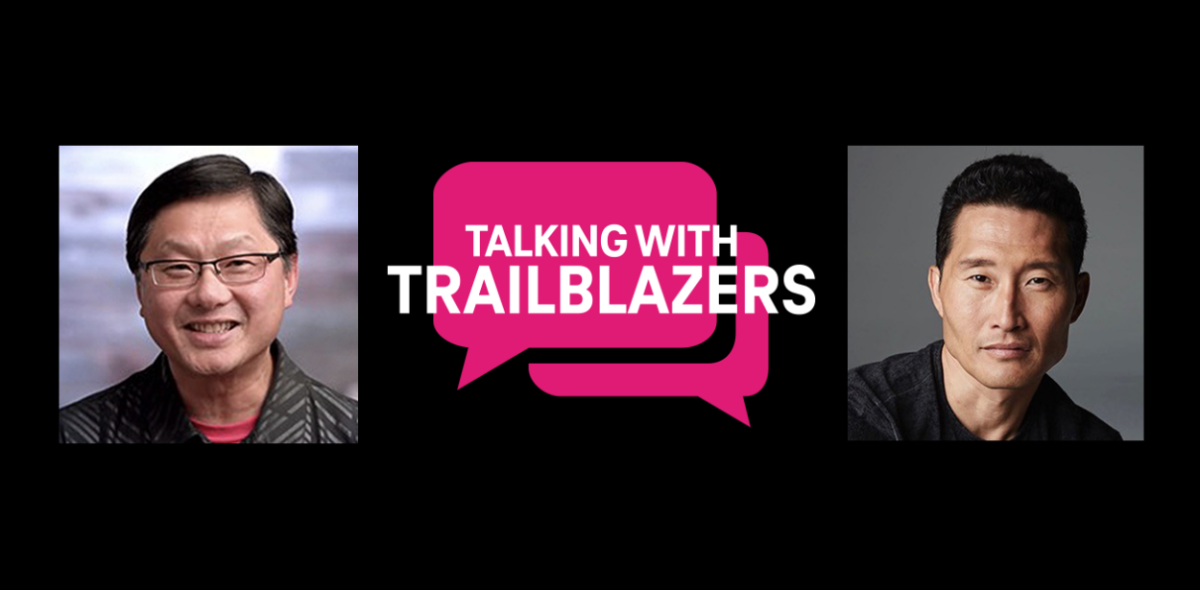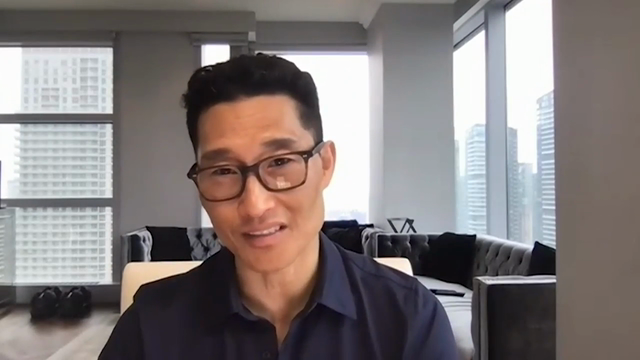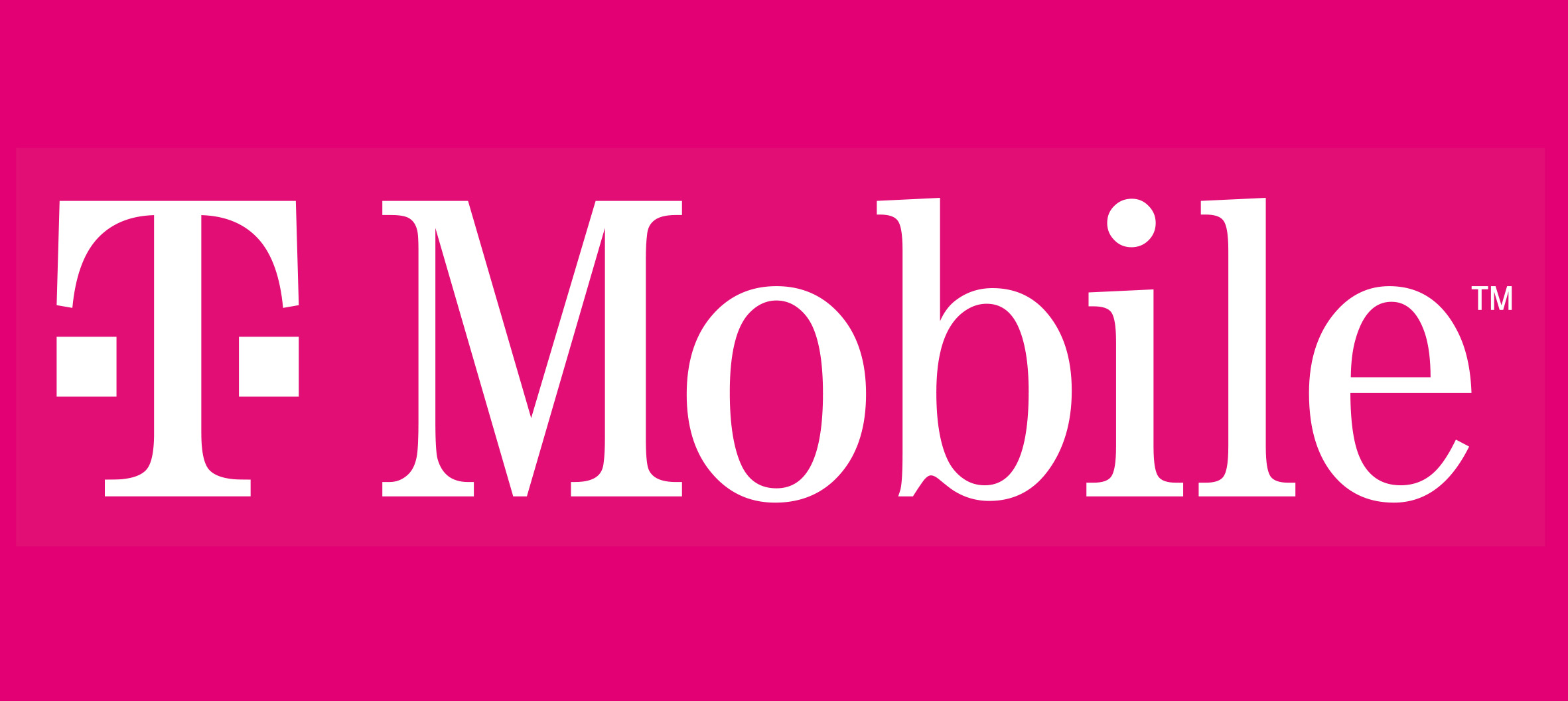Daniel Dae Kim: “Pressure Makes Diamonds, and Our Community Has Been Under Pressure”
As a way to honor Asian American & Pacific Islander Heritage Month, T-Mobile teamed up with its Asia Pacific & Allies Network Employee Resource Group to sponsor events that share the personal experiences of the AAPI community. A particular highlight was the company’s most recent installment of its Talking with Trailblazers guest-speaker series with actor Daniel Dae Kim, who was keen to review how America’s problematic history has led to current anti-Asian events grabbing headlines, and the disturbing statistics behind them.
Between March 2020 and February 2021, more than 3,795 Anti-Asian hate incidents were reported. Though much of these numbers appear to be fueled by rhetoric over the COVID-19 pandemic, Kim explained to an audience of more than two thousand T-Mobile employees tuning in virtually, that history seems only to be repeating itself when it comes to the collective narrative of racism against Asians in America.
“There have been a number of events that have not only made us the perpetual foreigner in America,” he said, “but also created a number of stereotypes that lead to the issues that we face today.”
Kim, who can currently be seen starring in Netflix’s Stowaway, and who became well known for his roles in pop culture phenomena like Lost and Hawaii Five-0, has been a longtime champion of increased diversity and Asian American representation in Hollywood. He recently testified before Congress about anti-Asian hate in the country, speaking before the House Judiciary Committee regarding the HR908 bill condemning all forms of anti-Asian sentiment in September 2020 and again in March 2021.
“There was a 169% increase in hate crimes against Asian Americans nationally from this time last year, and in New York it’s a 223% rise from the same time last year,” explained Kim, a longtime resident of New York. “It’s emblematic of the fact that it’s not just the pandemic … anti-Asian sentiment is nothing new in America. If you’re a student of history, you know that from the 1800s and the first time that Asians set foot in America, there’s been legislations enacted against them that’s created stereotypes, and that they were the first ethnic group to ever be prevented from entering America as part of the Chinese Exclusion act in 1882.”
Kim spent an hour with John Saw, T-Mobile’s EVP of Advanced & Emerging Technologies, talking about these moments in history that have impacted the AAPI community, with a focus on how both Asian Americans as well as allies can promote diversity and inclusion to combat current trends of violence.
Kim’s mastery of the history and language around this subject is profound. Here are five key takeaways from the event that gave us pause, along with some uplift and signs of hope ahead.
On how the history of bigotry perpetuates stereotypes.
“The Chinese Exclusion Act and the Page Act go hand in hand. The Page Act of 1875 excluded Asian women from coming over and so you had thousands of Chinese immigrants working on the railroads in America who no longer had hope of marrying or finding any companionship within their race. And so, the ironic thing was the reason why the government supported the Page Act because they thought the Chinese supported polygamy and prostitution, and by allowing Chinese women to come that it would only increase those industries. But by preventing Chinese women from coming over they actually stoked prostitution. So the idea of stereotyping started even then — the idea that the Chinese were dirty or untrustworthy or dumb. If you look at the portrayal of Chinese people in the news … it was very demeaning. The stereotypes start there and then in WWII you have over 120,00 Japanese Americans taken from their homes and imprisoned because they looked like the enemy in WWII, even though they were American citizens. It just perpetuates this idea that we were always foreigners, even some of those placed in Japanese Internment Camps were even third or fourth generation American. This appearance has led again in today’s news with the pandemic and the violence associated with the pandemic. These are the ways in which our history has influenced our perception, and our perception influences how we are portrayed in the media.”
On the importance of allyship across all communities.
“It’s really important to have allyship among all communities. We need to accept allyship and be allies … I think there's a tendency in these kinds of discussions about race and representation to present it as a binary equation, that the more that some Asian Americans rise, the more it adversely affects another population. And that really isn’t the way I encourage people to look at this. It’s not really a matter of one race or group against another. It really is everyone against racism and everyone against bigotry. There will be people of all races and creeds who are just going to be racist. But I believe that there are more people of every race who want to create a better society and create a country where we can all live together more harmoniously. It’s those people that are the most important to me right now, because I believe they exist. I believe our allies exist in the African-American community, the White community, that the Latinx community. It is a two-way street. We all need to reach outside of our home communities and think about the ways that their experiences might be different from ours and how we can seek to understand each other so that we can work together better. We can live together better. And that's why allyship is incredibly important.”
On speaking up, and speaking out.
“In the ways that there is work to do, it is incumbent on me the way it’s incumbent on any of us with any kind of a platform to speak out, because if we stay silent we are only perpetuating the problem. I am fortunate enough to be in that position where I can speak truth to power, so why would I not? Because if it’s not me, then who else? Those of us who have been lucky enough to achieve in this country are the ones who can help the most. The message I wanted to share with Congress was that this problem persists. I came back a second time because nothing had changed. I think we need to hold our leaders accountable for progress and change. I think that’s not just an Asian-American issue, that’s an issue on governance in general. We elect our leaders and we must speak up for the change we want to see. We must be the change we want to see, so I wanted to remind them that we are still here. The issue still exists. In fact, it might have gotten worse — and the one thing they cannot do is continue to ignore us.”
On the “White adjacent” and “model minority” myths.
“In a nutshell, the model minority myth is this notion that the most successful Asian Americans represent all Asian Americans. We see people like me, we see people who are doctors and lawyers, and we think, ‘Oh, well, Asian Americans don’t need our help. They’re fine.’ But the fact is, that Asian Americans have the largest wealth gap among all of the demographic groups in America. We have very wealthy Asian Americans, but we also have some of the poorest people in the country. In New York City, Asian Americans are the group with the most under the poverty line. ‘White adjacent’ means that we are so successful that we shouldn’t be considered people of color. It’s this idea that because Asians are perceived as successful and there’s a segment of us that’s very law abiding, that we are as close to White people as you can be while still being a person of color. But this notion that we’re too successful to be considered people of color is an implicit assumption that White equals success.
“And the thing that we’ve found throughout history is that our White adjacent-ness is conditional. When things are going great, then we’re kind of accepted as part of the group, and we’re the model minority, but as soon as things start going bad, as they have been during the pandemic or during the American auto and steel issues in the ‘80s, then we are the first to be scapegoated, and then hate crimes rise against us. This idea of conditional citizenship is right alongside this idea of being White adjacent, and why it’s insidious is because those two terms, along with model minority, also implies that there’s a comparison between us as a minority group and African Americans and the Latinx community. We’re all being compared, and therefore pitted against one another, when the fact is we all have very unique and distinct histories in the United States. To say that one has to be like the others is already a fallacy.”
On hope for the future.
“Right now, I am very encouraged because there are a number of efforts being made on part of the Asian-American community to galvanize and create national organizations in ways we haven’t seen before. There's a group called the Asian American Foundation that just formed, that has 40 of the top law firms in the U.S. and the Asian attorneys who are in those law firms have all agreed to do pro bono work for the victims of anti-Asian violence. That is a massive movement and change as we haven’t come together in that way before. There’s an organization about to launch in May called the Asian American Foundation. This is an unprecedented movement and coming together of Asian Americans around the country to form an organization to help in these situations and to increase education and amalgamate data for these kinds of hate crimes. And this is the first effort of this kind on this scale. I think we need to continue to get the message out there and organize and come together. It’s a real inflexion point for Asian-Americans in this country. Pressure makes diamonds, and our community has been under pressure.”



